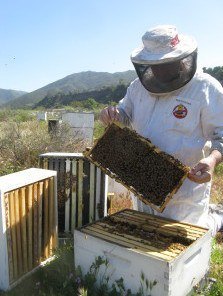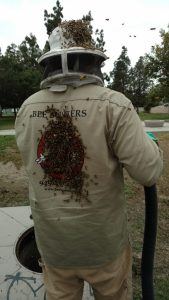The Fascinating World of Bees
Bees are truly remarkable creatures, playing a vital role in our ecosystem as pollinators and producers of honey. At Bee Busters, we have a deep appreciation for these incredible insects and their importance to our world. As experts in bee removal and rescue, we take pride in our ability to safely and humanely relocate bees while keeping them alive and thriving.
Bee Anatomy and Behavior
To understand bees better, it’s essential to explore their anatomy and behavior. Bees are members of the Hymenoptera order, which also includes wasps and ants. They have three main body parts: the head, thorax, and abdomen. Some interesting facts about bee anatomy include:
- Eyes: Bees have five eyes, two large compound eyes and three small simple eyes called ocelli.
- Wings: Bees have two pairs of wings that are hooked together, allowing them to fly efficiently.
- Stinger: Female bees possess a stinger, which is a modified ovipositor used for defense and, in some species, for laying eggs.
Bees are social insects, living in complex colonies with a highly organized division of labor. A typical honey bee colony consists of three types of bees:
- The queen bee, responsible for laying eggs and maintaining the colony’s cohesion through pheromone production.
- Worker bees, which are female bees that perform various tasks such as foraging, caring for the young, and defending the hive.
- Drone bees, which are male bees whose sole purpose is to mate with a queen from another colony.
Bee Communication and Navigation
Bees have evolved sophisticated communication and navigation systems that allow them to work together efficiently and find food sources. One of the most fascinating aspects of bee communication is the waggle dance. When a forager bee discovers a rich food source, it returns to the hive and performs a figure-eight dance, waggling its body to convey the direction and distance of the food source to its fellow workers.
Bees also have an incredible sense of navigation, using the sun’s position, polarized light patterns, and Earth’s magnetic field to orient themselves and find their way back to the hive. This ability to navigate precisely is essential for the survival of the colony, as bees must travel long distances to gather nectar and pollen.
At Bee Busters, we understand the importance of preserving these complex social structures and navigation abilities when removing and relocating bees. Our skilled technicians work diligently to ensure that the entire colony is safely removed and transported to a suitable location where the bees can continue to thrive.
The Importance of Bees in Our Ecosystem
Bees are not only fascinating creatures but also crucial to our ecosystem and food production. As pollinators, bees play a vital role in the reproduction of many plants, including crops that we rely on for food. It is estimated that one-third of the food we consume depends on pollination by bees and other insects.
In addition to their role as pollinators, bees also produce honey, a valuable food source and natural sweetener with numerous health benefits. Honey has been used for centuries as a natural remedy for various ailments, thanks to its antibacterial and anti-inflammatory properties.
At Bee Busters, we are committed to protecting bees and promoting their well-being. We handle bee removal and rescue in Irvine, Laguna Beach, Laguna Hills, Lake Forest & Mission Viejo, CA, ensuring that these essential creatures can continue to thrive and contribute to our ecosystem. Our team is always available and never fails to provide top-notch service throughout the Orange County, CA.
We’re Here to Help with bees
Bees are truly remarkable creatures, with fascinating biology, complex social structures, and crucial roles in our ecosystem. By understanding and appreciating the importance of bees, we can work together to protect these essential insects and ensure their survival for generations to come. At Bee Busters, we are proud to be a part of this effort, providing expert bee removal and rescue services to keep both humans and bees safe and thriving.







